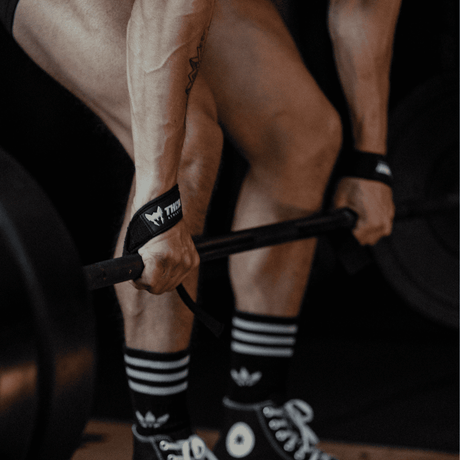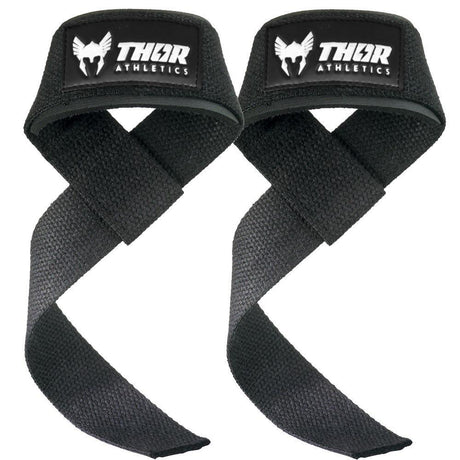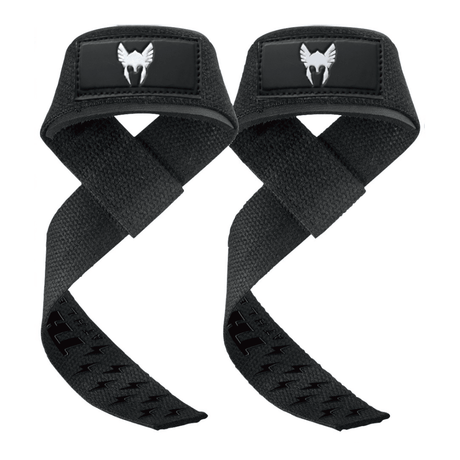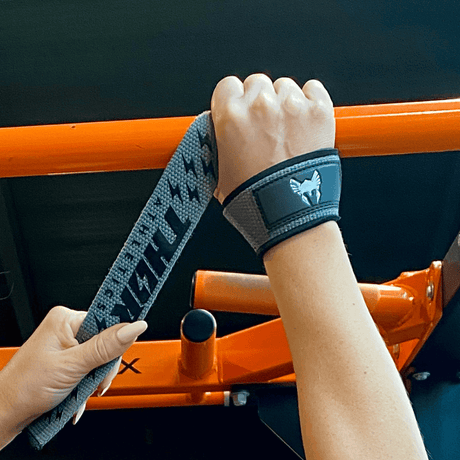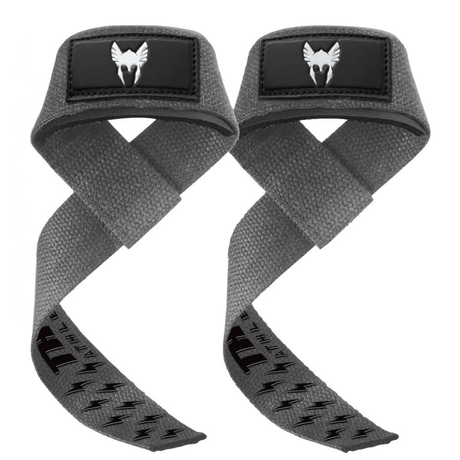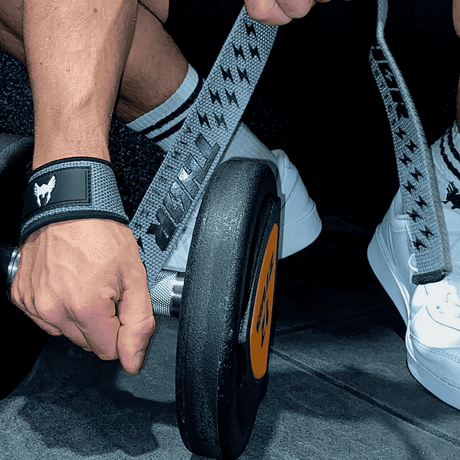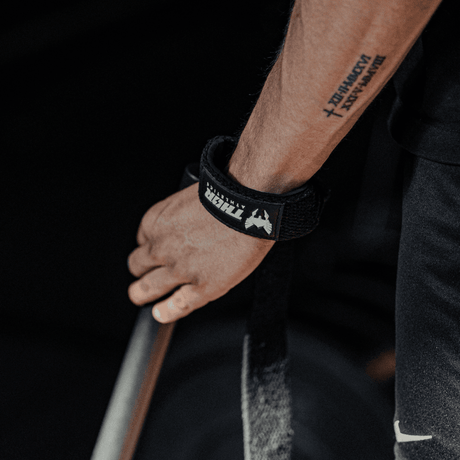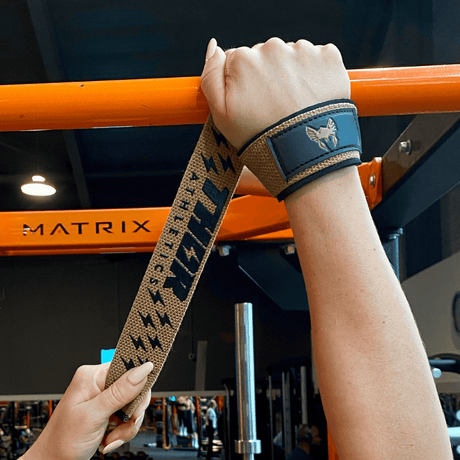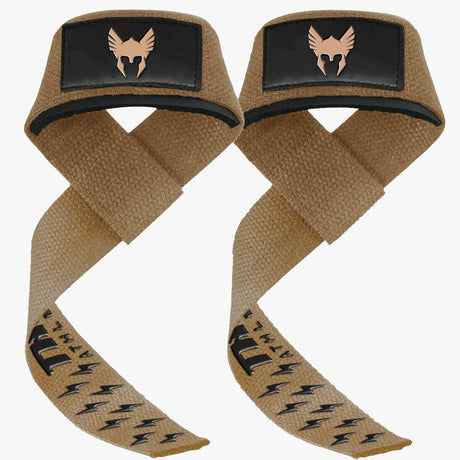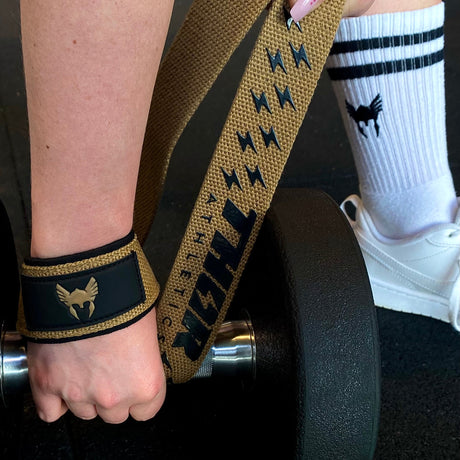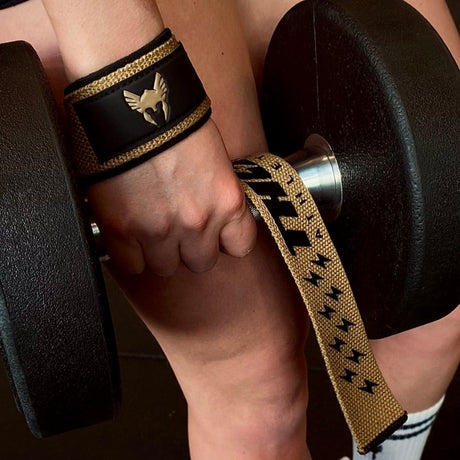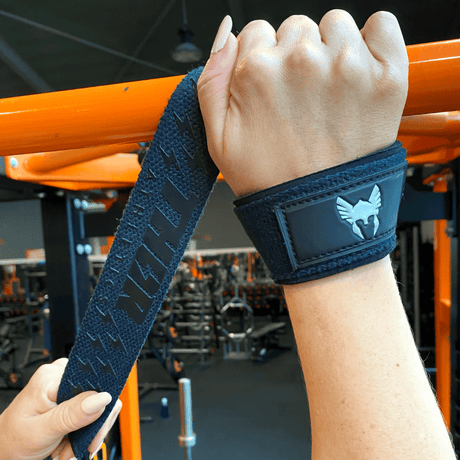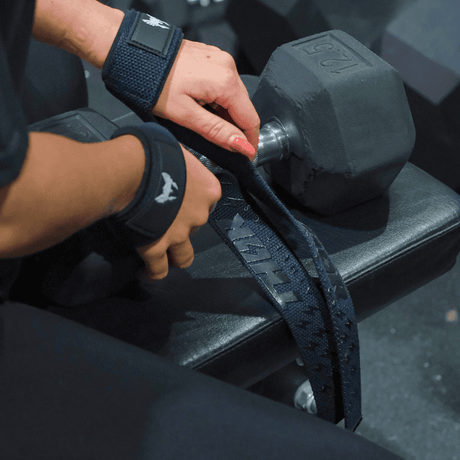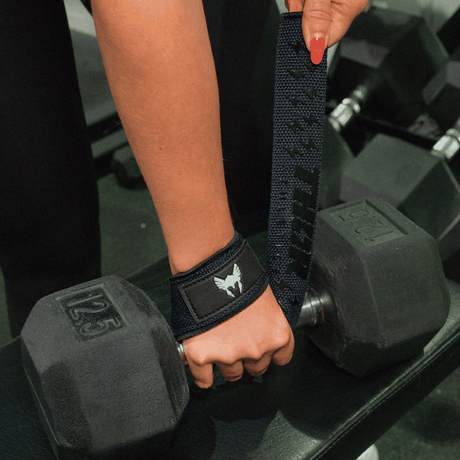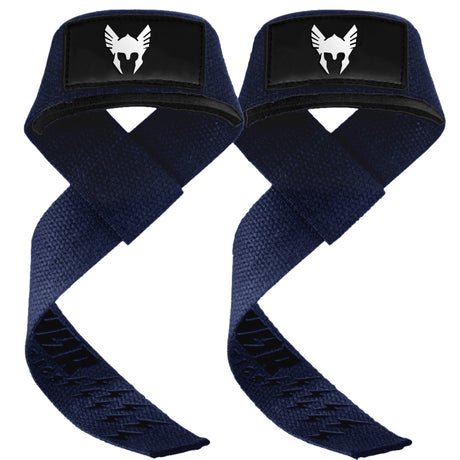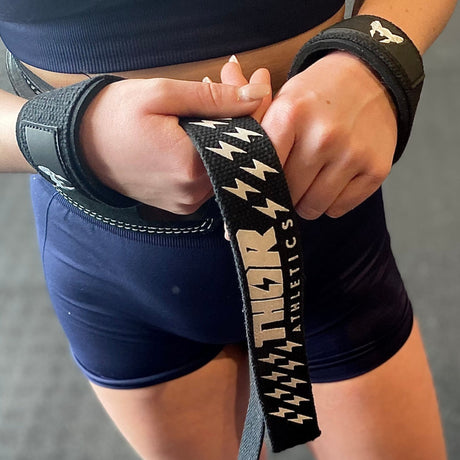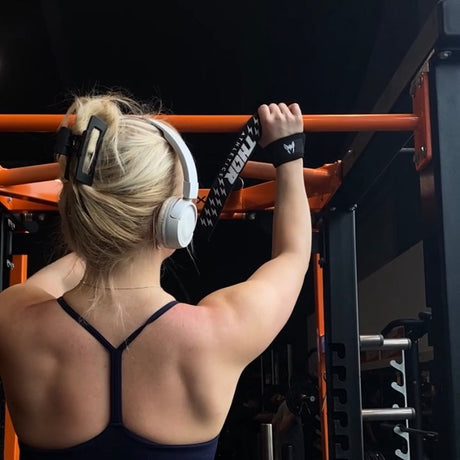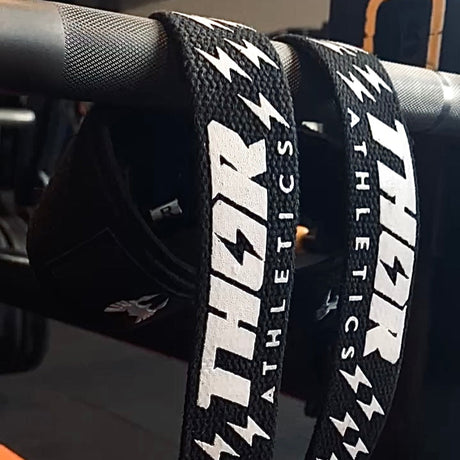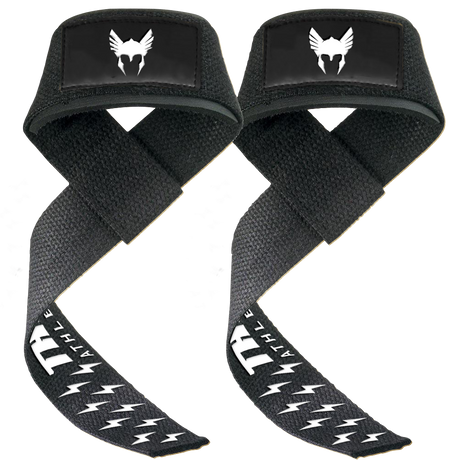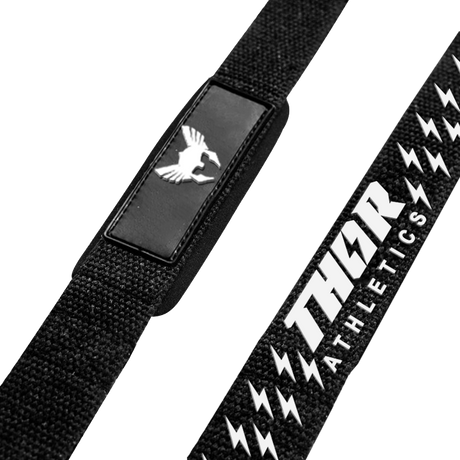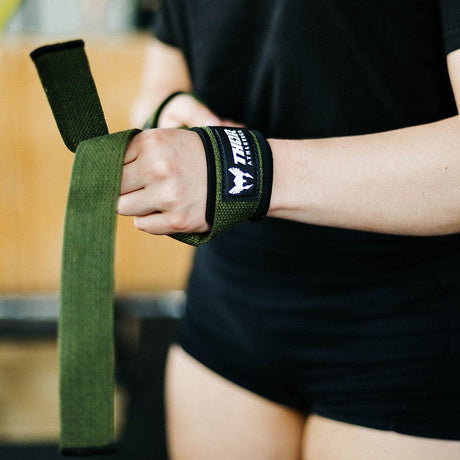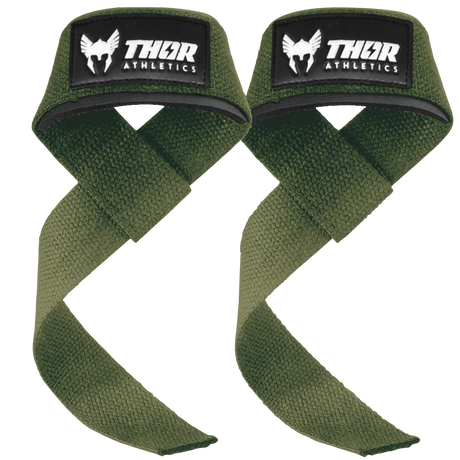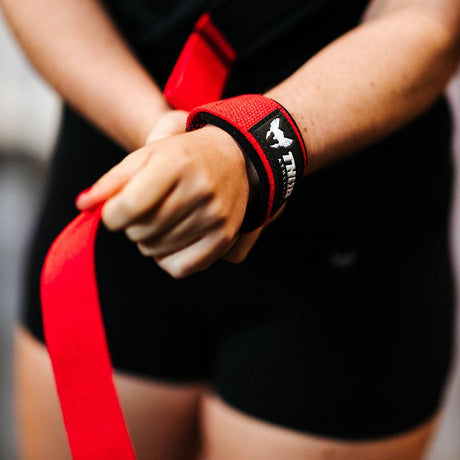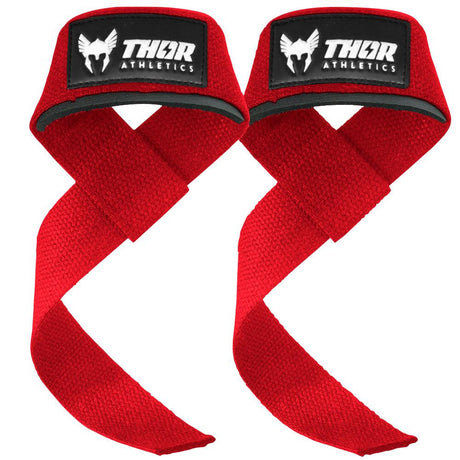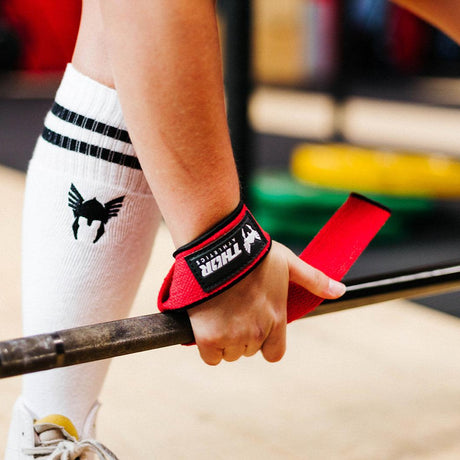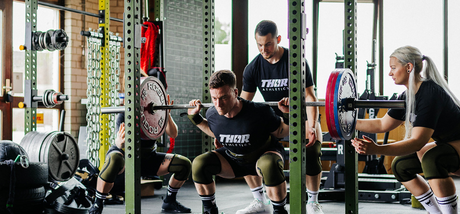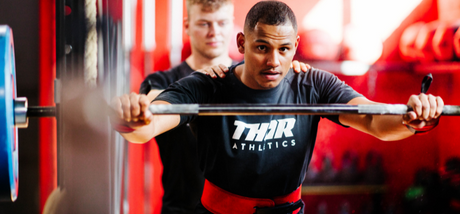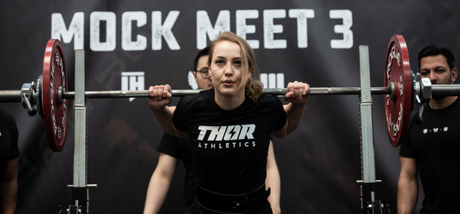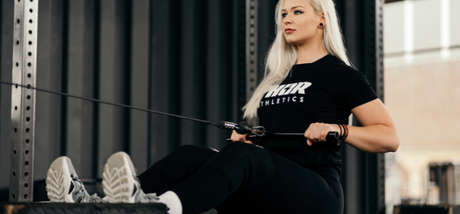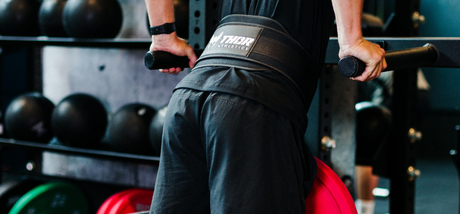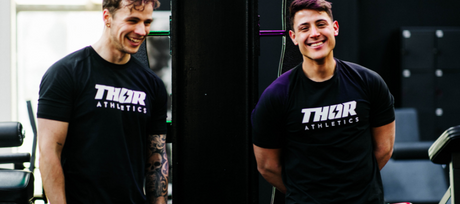In this blog, we will explain to you from A to Z what a Dipping Belt is, what you can use it for, the benefits of a Dipping Belt, and which exercises it is suitable for.
But we will also tell you why we had our Dipping Belt made the way we did, there are obviously reasons behind this.
What is a Dipping belt?
The name already says a bit, a belt used for dipping. And of course, we don't mean dipping your nachos in guacamole, if you know you know.
No, we are talking about the exercise Dips here, a beloved exercise for some of us and a terrible exercise for others. Why? We'll get back to that later.
So, what exactly is a dipping belt?
In short, it is a belt, often made of leather or neoprene, with a link and a chain at both ends. You (of course) wear the belt around your waist, and you hang weights (a kettlebell or a plate) on the chain to make an exercise harder because it has become too easy with just your body weight since you invested in Thor Gear and have become godlike strong.

Bodyweight VS extra weight with a weighted belt
Let's be clear that there is no benefit to using a dipping belt if you haven't got your form right for certain exercises yet. If you add weight to an exercise you don't have under control yet, you only increase the chance of injury, so don't do it. Ego aside and first learn the exercise properly.
Form over weight at all times.
BUT, if you have mastered an exercise and can add a rep (or more) every week and instead of your triceps failing on a dip, your lungs fail because you can do 50 reps, then a dipping belt is very useful.
This allows you to add weight when you reach a certain repetition range (say you train in the 5-10 rep range and you have done 3x10), then next time you can hang a plate of, for example, 1.25kg on the belt to apply 'Progressive Overload' again.
Exercises with a dipping belt
There are plenty of exercises where you can use a dipping belt; below I will explain the most common ones.
Weighted chin-up or pull-up:
Does this still need explanation, you might say? When I sometimes walk in the gym and see people doing this exercise, then yes.
No, we're not talking about 'kipping' the 'cross-fit pull-up' here, but we are talking about the chin-up or pull-up.
This means that ideally you pull yourself up with your chest to the bar and from there fully lower yourself until you are completely 'hanging'.
So no repetitions where you throw your chin over the bar like a pigeon, and also not halfway where you drop down and do a little jump in the air to push yourself back up.
Controlled repetitions with a full 'Range of Motion'
Can't do this yet? Then first get stronger on, for example, a lat pulldown or do 'negative' repetitions.
You were always so positive, Martijn? Yes, yes, hear me out.
Negative repetitions mean, for example in a pull-up, that you jump up until your chest touches the bar and then slowly lower yourself from there. This can be 3 seconds, for example, and you do this 5 times.
From there, for example, you do it 6 times next time and build it up to, say, 10.
You can also adjust your tempo so that at some point you don't lower for 3 seconds but for example 5 or even 10 seconds.
You can vary this a lot, so especially see what works for you.
By the way, you can also do this with other exercises, like bench pressing.
Advantages of doing this with a dipping belt:
A pull-up or chin-up is a fairly large and tiring exercise; you will probably notice that when doing these exercises with higher repetitions you get tired quickly and your reps drop fast. If you do 20 the first time, chances are you might only get 15 next time (if your set was close to failure).
By adding extra weight, which provides better resistance, your repetition range will be much lower and you might end up with a repetition range of, for example, 5-10. You might get 9/7/6 reps and thus build up less fatigue than in the 15-20 repetition range.
Because your fatigue is lower in a lower repetition range, you have better resistance and can progress faster due to mechanical tension, adding weight to your pull-ups or chin-ups is a great tool for more progress.
Be careful not to hang too much weight so that you start compensating for good form.
Weighted push-ups:
I hear you thinking; Push-Ups? Dude, I did these when I was 13, after watching my first Arnold Schwarzenegger movie and deciding I wanted a chest like his, so I did 200 push-ups every day before going to sleep. This didn’t actually work.
I feel your pain, really. But the push-up is a great exercise, especially when weighted. With a strong carry-over to Bench Press, it certainly doesn’t hurt to include it in your programming.
You wonder how you’re going to do this with a dipping belt, let me explain:
You place a bar in the Squat Rack (don’t worry, we’re training Chest today, not legs) at about one meter height (depending on your height).
Place a bench in front of the bar at a distance so that when you put your feet on the bench you are almost fully extended (in push-up position) and you can grip the bar with your arms (about shoulder-width or slightly wider).
Once you have found this setup, you can put on your dipping belt, hang some weight on it, and start building a huge chest.
Why you want to do weighted push-ups instead of bodyweight:
Because the push-up is such a basic and simple exercise (even though it is often done 'wrong'), it is generally quite easy after some practice to do a higher repetition set and really tire yourself out.
To create that extra overload without too much fatigue, we can add extra weight.
By adding weight to your push-ups so that the weight is actually 'hanging' in the air downwards, this causes your core to work harder and thus you also strengthen core stability. So adding weight to your push-ups is also a good idea for a stronger core.
Weighted muscle-ups:
If you really love Calisthenics and Muscle-Ups are really your thing but you are already so good at them that you can do 20 in a row, then you can also easily add weight here by simply hanging a kettlebell or plate on your dipping belt to get even stronger.
Weighted Dips:
Last but certainly not least for some; The Weighted Dips.
A great exercise for some of us for the chest/triceps and shoulders, and for people like me, an exercise where everything starts to crack and hurt from the first repetition. Is it age, is it the way pressure is applied to your tendons/muscles? Nobody knows.
That doesn't take away that if the exercise feels good for you, it can be an extremely valuable exercise for both muscle growth and carry-over to bench pressing.
Let's be honest, your triceps get a huge hit from this exercise.
Because this is also a bodyweight exercise and you quickly become 'strong' with this exercise, you will also quickly reach the higher repetition ranges here. As mentioned earlier, it is also nice to add weight so you don't build up unnecessary fatigue.
So, if you can do this exercise without pain or discomfort in your body and you want triceps like horseshoes, start dipping and immediately hang some weight on it.

What should you consider when buying a Dipping Belt?
When buying a dipping belt, it's good to pay attention to a number of factors, for example, it's important to find out how much weight you can hang on the belt. This also depends on your personal goals and your strength. If you don't feel the need to do exercises with an extra 150kg, then it's not immediately necessary to get a belt that can lift this weight or more.
Important aspects when buying a weighted belt:
Of course, you can just type into Google; Buy dipping belt and you will find plenty.
But, which one do you choose and what should you pay attention to? Below, I will tell you a bit about what to consider when buying a Dipping Belt. Think, for example, about the length of the chain and the material of the belt.
Length of the chain
Not everyone is equally tall or has the same waist size, so the length of the chain affects how low and how close the weight hangs to your body.
Material of the belt
As mentioned earlier, there are often two types of belts, one made of Leather and one made of Neoprene.
So, what is actually better?
It's actually a personal preference. Leather is a bit stiffer and gives a certain 'quality' look. However, leather can also 'cut' into your waist a bit more easily.
Neoprene is a bit softer and can feel nicer around your waist.
Dipping belt from Thor Athletics
I have used multiple dipping belts in the past, both neoprene and leather.
Those with leather were always stiff and cut into my waist. I can already hear the hardcore gym bros shouting; NO PAIN NO GAIN. Yeah, that's cool bro but if something feels comfortable, I'm more likely to use it.
The neoprene belts I have used were often very thin and rough on the inside, so they were never very comfortable.
We have chosen to use extra thick neoprene for this belt instead of leather because it generally feels more comfortable than leather as it is less stiff.
The inside of our belt is also soft so it doesn't cut into your waist and feels comfortable.
We have also used an extra heavy chain so you can hang maximum weight on it.
You can add a maximum weight of 100kg to our dipping belt.
The first person who can do a chin-up or pull-up with 100kg extra, send us a DM for a nice surprise.
The Dipping Belt is currently out of stock, see below which Strength Training accessories are in stock
Thank you for reading this blog, hopefully you found it useful. If you still have questions and/or comments, please let us know by email thorathleticsnl@gmail.com of via DM @thorathletics



















